Ok, here’s the deal. Kale, collards, broccoli, brussels sprouts, cauliflower, cabbage, turnip, kohlrabi – all these amazing, diverse plants have been bred from the same wild cabbage ancestor.
Kohlrabi was bred to make a juicy, swollen stem, and you’ll notice it tastes like broccoli stem because, well, botanically, it pretty much is. Brussels sprouts look like teeny cabbages because they are – the breeding for brussels sprouts was to form heads on the axillary buds of the plant, and for cabbages we bred for one giant terminal bud.
Broccoli was selected to make big, tender florets and stems. Each little green bud on a head of broccoli will open into a cool yellow flower if you are too late to the harvest. (Read more: When and How To Harvest Broccoli and Cauliflower)
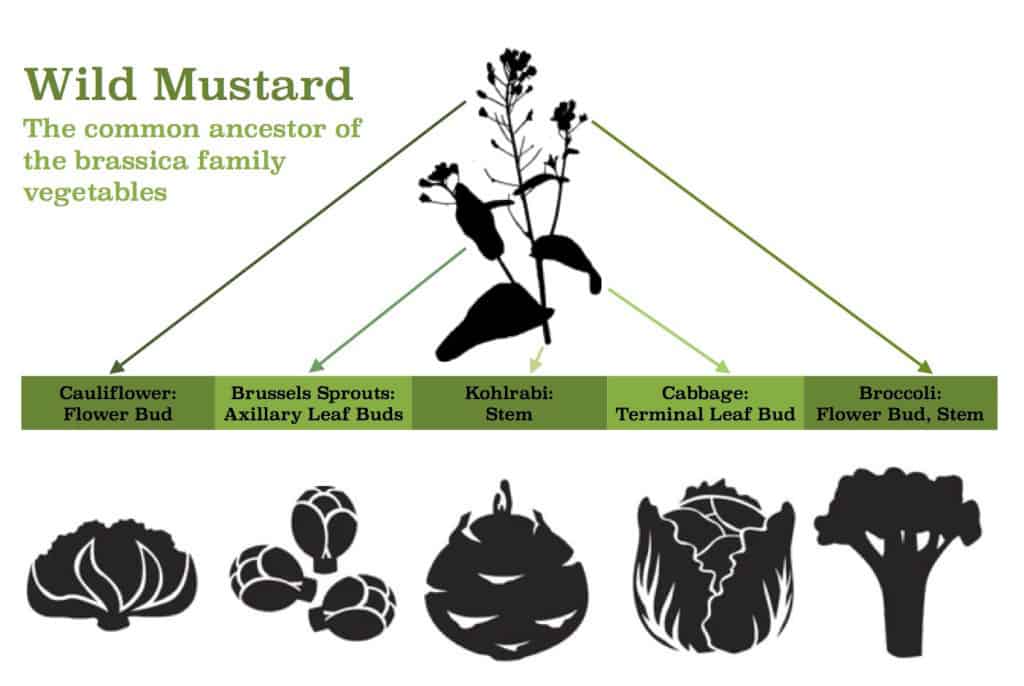
The important take-away is that brassica plants make all kinds of edible parts beyond what you think of as the vegetable sold at the grocery store. Broccoli leaves are edible, and taste much like collards. Brussels sprouts typically make an open-leaved, super-sized sprout at the top of the plant that you you cook like a small cabbage.
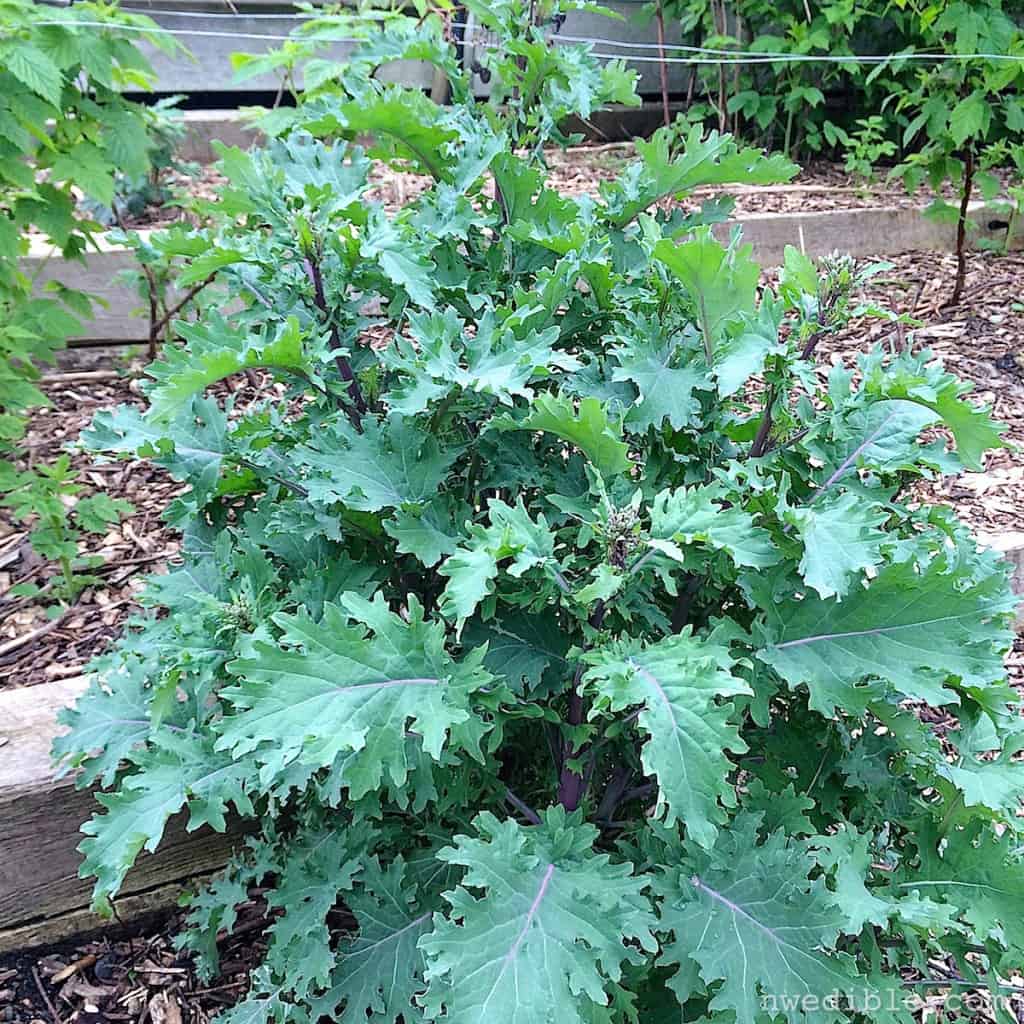
Which brings us to kale florets. Kale florets are the soon-to-be-flowers of the kale plant. They look and taste much like sprouting broccoli, and they couldn’t come at a better time. Nothing much is harvestable right now in the hunger gap of early spring, but stalwart kale sees warmer days ahead and starts pumping out the florets.
God I love this vegetable.
How do you harvest kale florets?
The florets shoot up from the intersection of stem and leaf. Just look for them there, and snap the floret down – they’ll come right off.
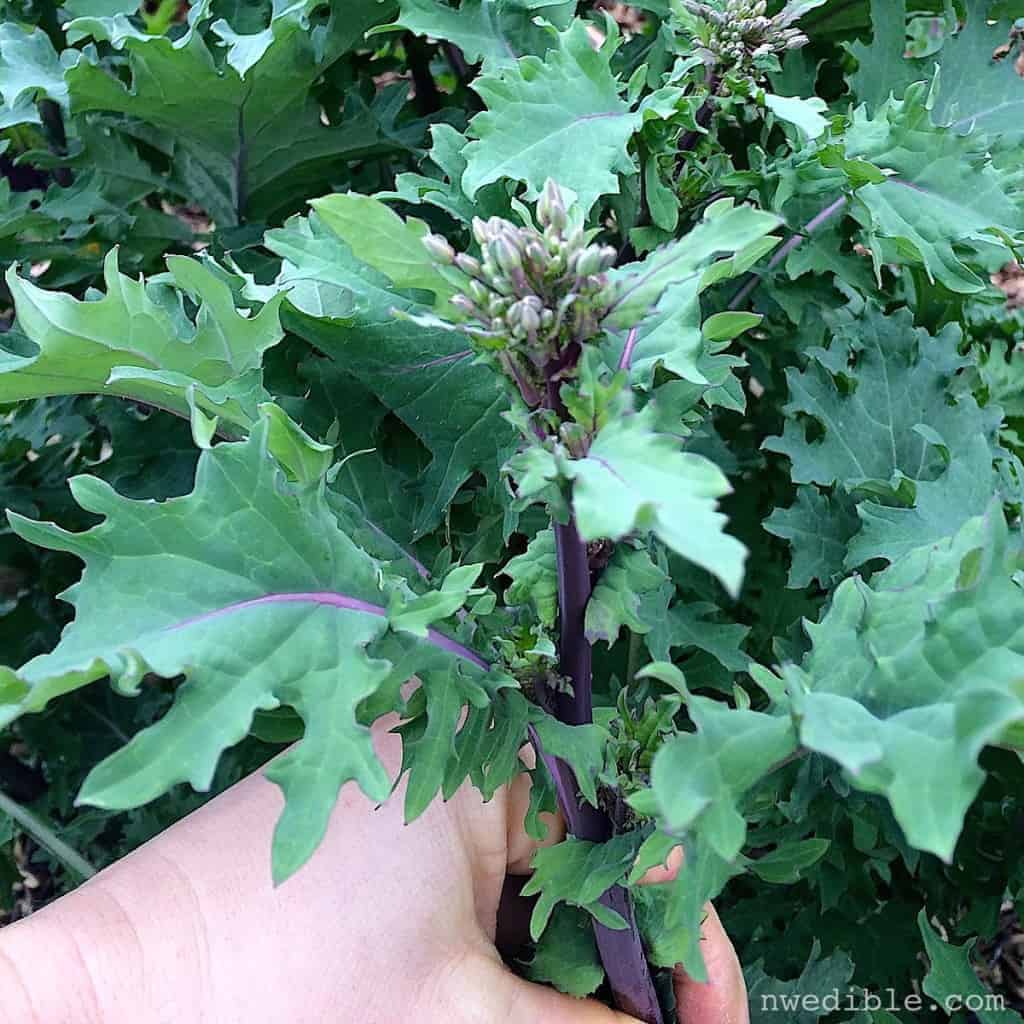
You want to catch them before they flower. Just like broccoli, we’re eating unopened flower buds here, and while the yellow flowers don’t turn toxic or anything, they get tough. Plus, the texture of the flower petals is kinda funny.
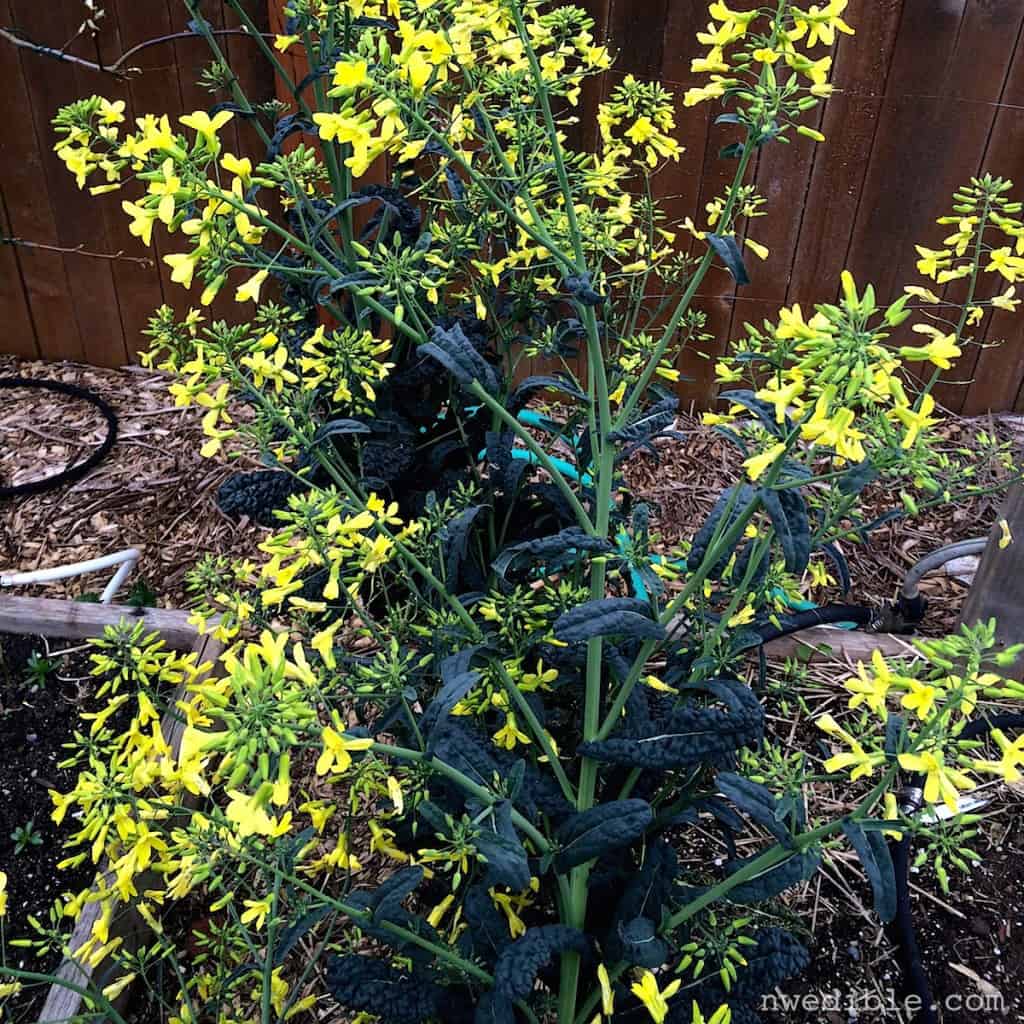
Different varieties will make florets at different points in the early spring transition. My Lacinato Kale is already in full flower, while my Red Russian is pumping out florets like mad. Harvest from the variety that’s ready, while the floret buds are still tight and the stalks remain tender.
Does the variety of kale matter?
The brief answer is, not much. There are subtle flavor differences in the kale florets, but to my palete they are more similar than different. I notice greater taste variation in the leaves of the kale varieties I grow than in their florets.
If you have a particular kale you like, you will probably like the floret from that variety. This is a second harvest vegetable, remember. I wouldn’t go planting a specific kale for the florets – if you’re going to do that, you might as well grow purple sprouting broccoli, which is bred for bountiful floret production in early spring.
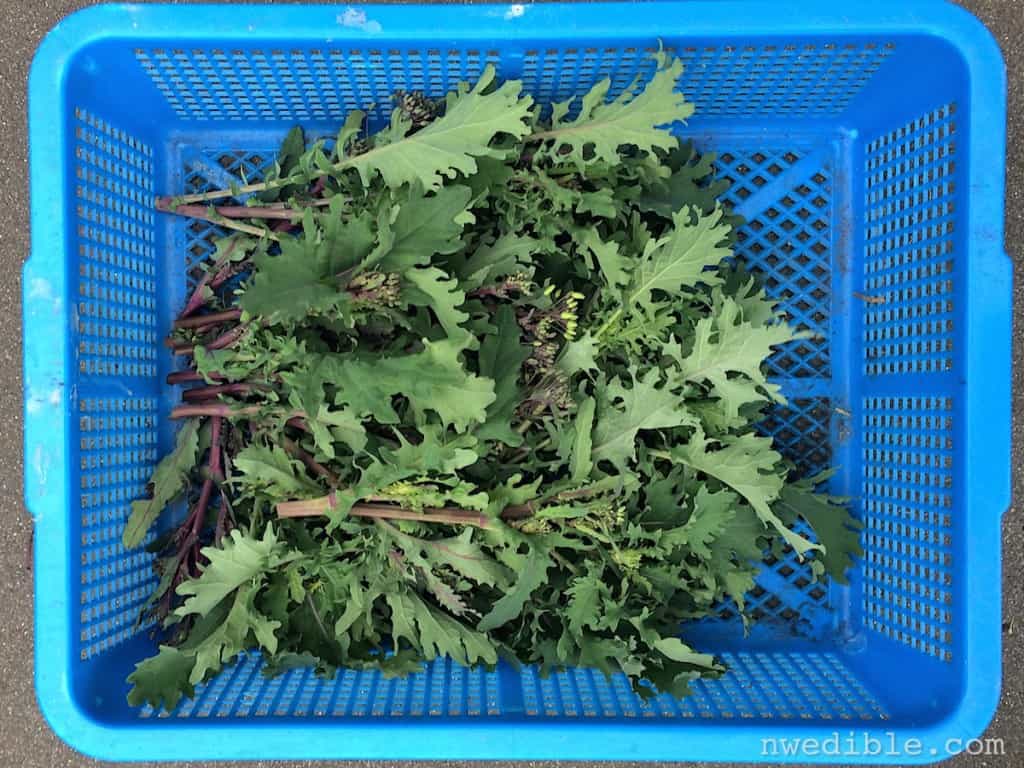
I haven’t noticed any yield difference in florets across kale varieties. You’ll get more and larger florets from bigger, healthier kale plants regardless of variety. I’m never able to eat enough to strip my plants of all their florets, and eventually the remaining shoots flower and become food for the bees.
Now that you’ve harvested your delicious kale florets, it’s time to cook them! May I recommend something like this delicious Skillet Kale Florets with Garlic, Chili and Lemon?
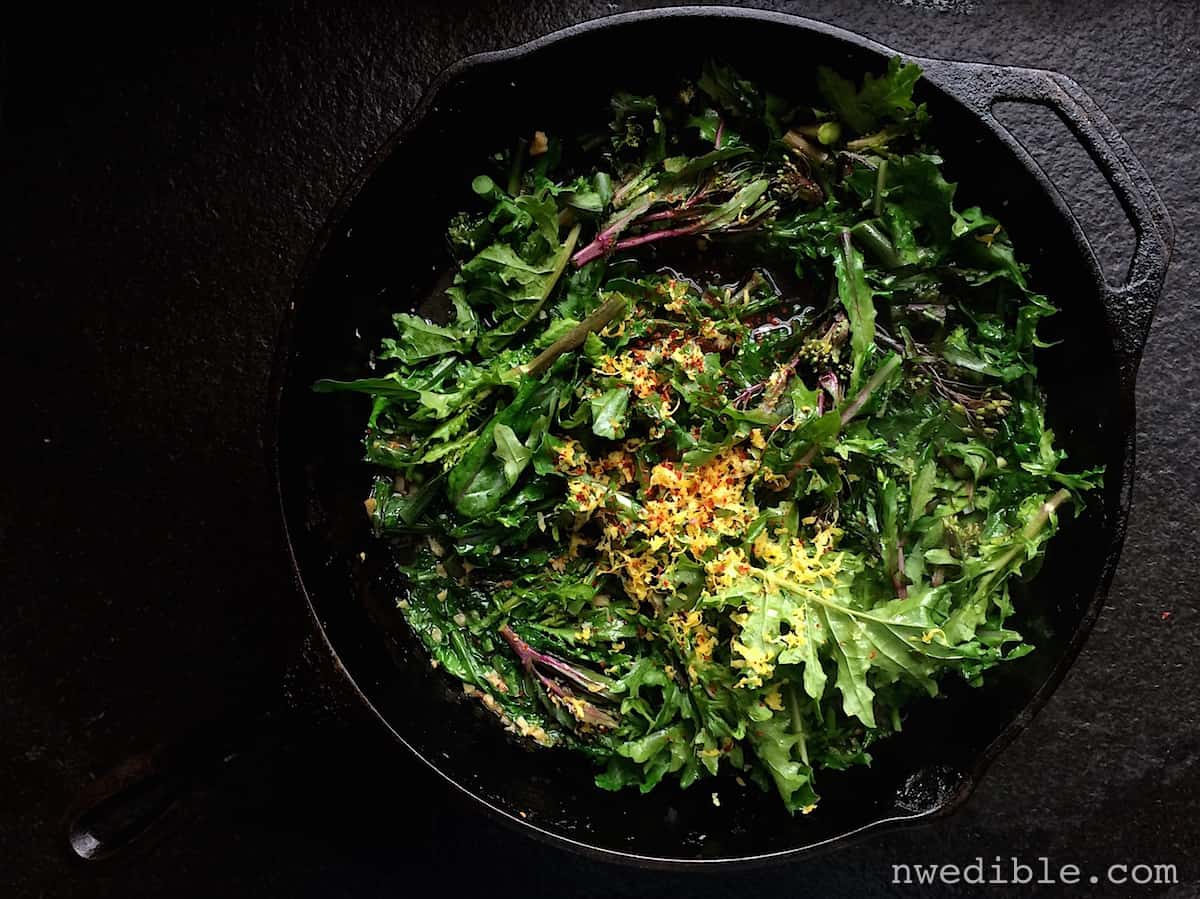
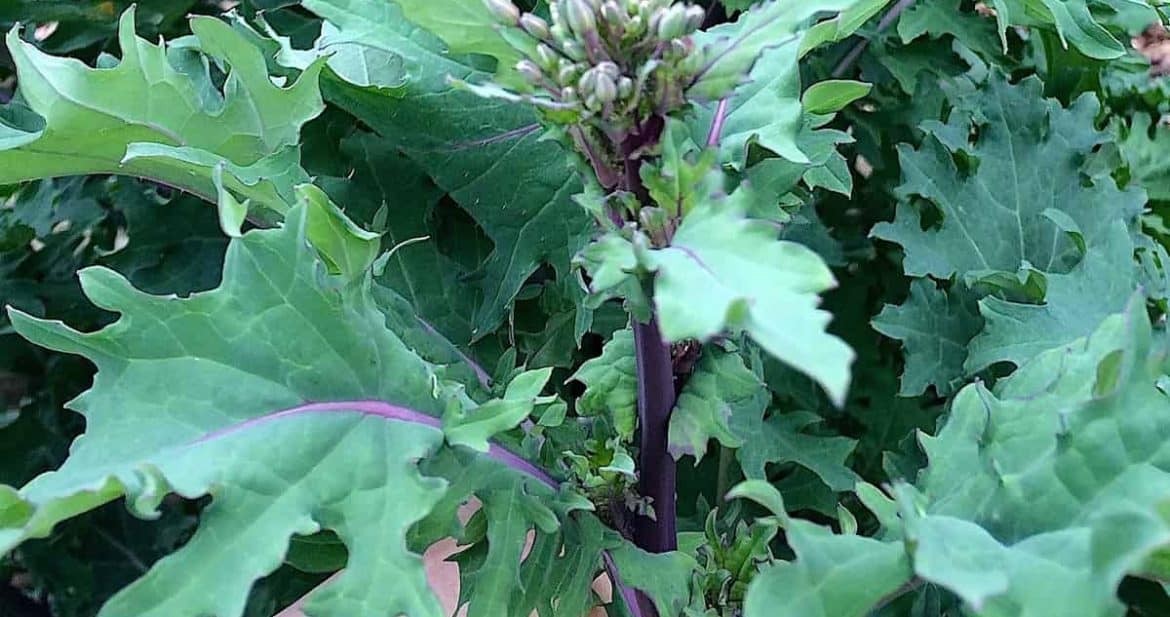
Well, to answer your question….how do I cook my kale florets, I actually don’t, I just eat them raw because I can be a little lazy with the cooking. But I’m going to try your spin, it looks absolutely scrumptious. The feta on top looks perfect, how about a little Parm too?
Anyhow, I couldn’t agree more about washing the kale. Last year, I found a whole grasshopper in the lettuce I just harvested, because it matched the color of the lettuce exactly, I didn’t notice and I almost served it to my husband for dinner. He would have flipped! I don’t know why, what’s a little more protein? Plus, I think it was an organic grasshopper.
Parm – absolutely. I had feta, so that’s what I used, but parmesean and maybe a few capers would be lovely, too!
My friend says, “If a bug wouldn’t eat it, you probably shouldn’t either.” 🙂
Stir-fried my first kale florets last week. So easy. One of the varieties seems to draw the wooly aphids so I gave those ones to the chickens (along with the ones that have flowered since the girls love those petals), but the other variety seems aphid-free. I have no clue what I’m growing as I just let the Red-Russian variety go to seed ages ago and now I have two different kinds growing everywhere with no help from me. I love this vegetable, but have never bought it in the store. It just loves our climate and our lousy soil, apparently. Maybe now that I’m into eating the florets I won’t have so many free-ranging plants of it.
I let Red Russian go to seed a few years ago too, and now it just shows up. I like my random kales popping up everywhere.
What a Great Post!
1) I like the pictorial breakdown of the gene family (I did not Know that!)
2) I love how you show ‘field’ pictures so we can discern “edible” lol
3) Your pictorial kitchen recipes are so inspiring! (so WHEN is the book coming out???)
4) Readers comments, don’t you just Love people here?
Share: I grew a healthy garden in Wyoming for a couple years (not an easy feat!) I had an amazing crop of Broccoli one year, harvested some at dusk for dinner, promptly brought it in & steamed it up. Set the candlelit table. The broccoli was delicious & had the most amazing flavor! Till I looked closely & saw it was ‘a protein’ I’m not familiar with eating in the US… lol Keep Posting! <3
Thank you so much, Heart. Appreciate your comment – and yes, I LOVE my readers and love their comments! 🙂 Book is going to the printer in three weeks (gulp) and will be out this Fall. Sorry about your buggy broccoli – I’ve definitely been there!
I had no idea you could eat kale like this! Definitely very interesting, especially given the love for broccoli, broccolini, and broccoli rabe at our house. Now all I have to do is plant kale for next fall…
I think kale sprouts would be a winner in your book – they are very similar to broccoli raab.
I saute with sliced bacon, diced onion, garlic and Chile flakes with a little honey, maple syrup or sorgum and a splash of apple cider vinegar to finish before serving. We get lots of kale, bok choi, spinach and chard in our CSA box so I have come up with a bunch of variations on this recipe but this is the way I cook them most of the time including florets. Kale leaves are especially good this way if you slightly scorch them not sure if that would work for florets though haven’t tired that trick with them. Bacon, diced brussel sprouts and leeks with lemon juice are awesome over pasta with parmasan grated on top as well!
Sounds delicious – a little heat, a little acid, and bacon is always a great choice for greens!
Hi Erica,
Have you tried the new kale/Brussels sprout cross yet? I have just got seeds and these guys call them kalettes. It will be interesting to see which is the predominate flavour and they are supposed to be easy to grow.
Got some Red Russian Kale from Johnny’s Selected Seed in 1991, watched a plant go to seed the following year and have had naturalized kale everywhere since. Cooked florets first a couple of years later, and it has become something of a spring ritual. I often steam fry them with peanut oil and garlic, whole, and eat them with chopsticks over a bowl of rice. If I’m feeling naughty, I’ll sometimes do them with olive oil, garlic and bits of pancetta, sometimes dressed with a filet of balsamic or sherry vinegar at the last second. Grazing on both tender leaves and florets is also in order, and something I’ve been teaching my grandkids.
I knew that broccoli, cauliflower, cabbage and brussel sprouts were not only the same genus but also the same species – I remember my amazement at that discovery. I didn’t know there were several others in the group but it makes sense. Of course all the parts should be edible but I just never made the leap to kale florets. It feels a bit like when I made the discovery that pea shoots were edible a number of years ago – a whole new world from an old plant friend. Thanks for the insight!
The flower buds are excellent to mix into my kale chips recipe as well. They give it a nice little crunch and tend to hold the oil and nutritional yeast nicely.